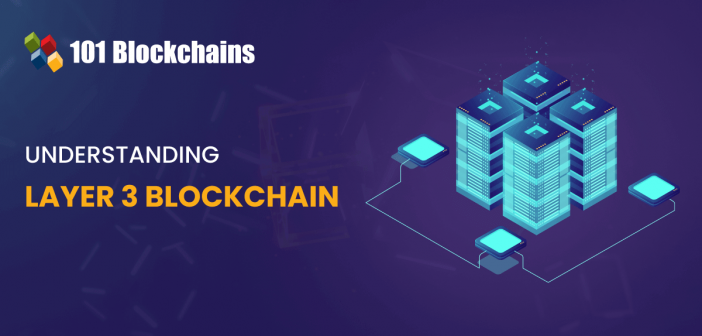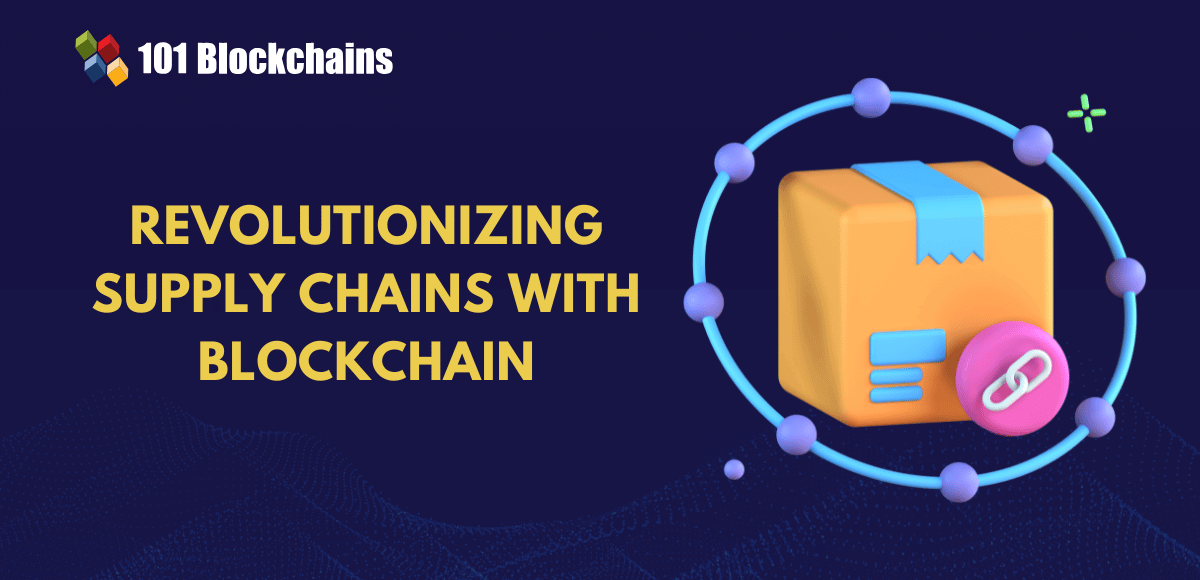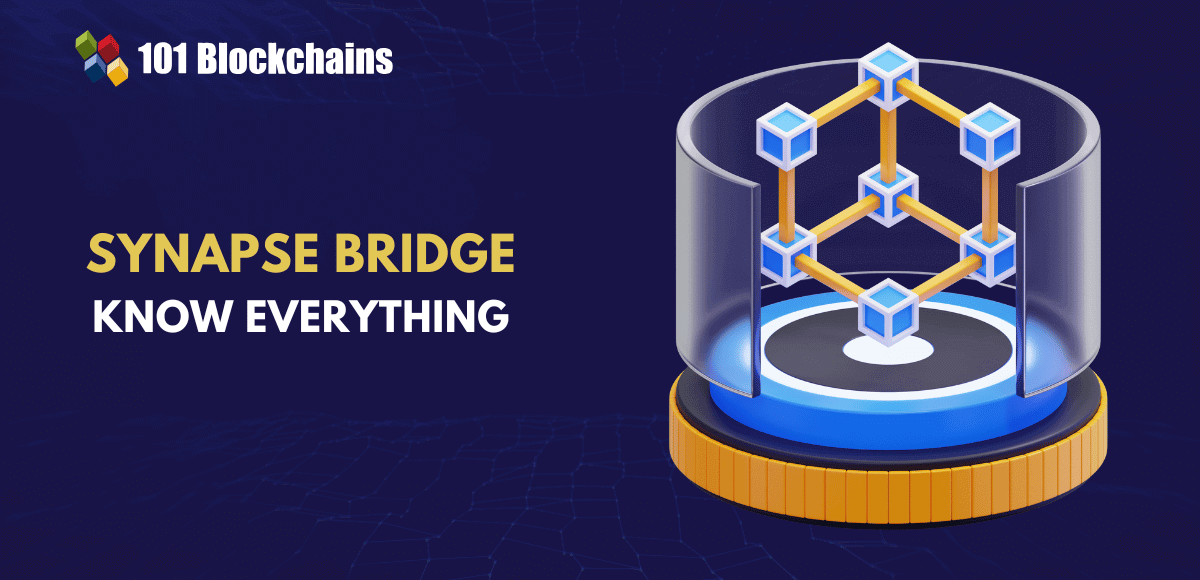Learn how blockchain truly works, master key definitions, and uncover what makes smart contracts so "smart." Dive into the fundamentals, gain valuable insights, and start your blockchain journey today!

- Blockchain
Georgia Weston
- on June 10, 2022
Understanding Layer 3 Protocol in Blockchain
The overall market capitalization of Bitcoin was more than $1 trillion in April 2021. Ethereum is growing with the constant rise of the DeFi ecosystem, ensuring a favorable platform for decentralized applications. The constantly expanding demand for multi-layer blockchains has created favorable implications for the possibility of layer 3 protocols in the blockchain ecosystem.
What are these layer 3 solutions in the world of blockchain? How do they contribute value to the blockchain ecosystem in general? The following discussion offers an introductory overview of layer 3 solutions and protocols in blockchain. You can learn about the advantages of layer 3 blockchain protocols and the examples alongside the necessity of such solutions.
Want to learn blockchain technology in detail? Enroll Now in Certified Enterprise Blockchain Professional (CEBP) Course
Why Does Blockchain Need a Layer 3?
The obvious question on everyone’s mind regarding layer 3 solutions in blockchain would refer to the necessity of the same. Any individual familiar with the blockchain space must have heard about blockchain trilemma. The phenomenon pits three important factors against each other, and blockchain networks are often stuck on the choice of attribute they would like the skip. Interestingly, the origin of blockchain layers started from the trilemma, which implies that blockchain networks could satisfy only two of the three attributes.
-
The Blockchain Trilemma
The three elements in the blockchain trilemma include decentralization, security, and stability. Almost every blockchain project must sacrifice one of the factors to achieve better performance with the other two. You can find the trade-offs in common examples such as Ethereum and Solana.
Ethereum and Bitcoin focus more on security and decentralization, while Solana focuses more on stability and security. The scalability trilemma presents a formidable issue for integrating the three elements in a layer 1 blockchain. Therefore, a multi-layer structure can provide an efficient and cost-effective solution tailored effectively for achieving scalability, security, and decentralization.
Now, it is important to wonder whether the layer 3 protocol type is required when you can have layer 2 protocols. What can be the possible reason behind introducing layer 3?
Excited to learn the basic and advanced concepts of ethereum technology? Enroll Now in The Complete Ethereum Technology Course
-
Blockchain Interoperability
The basic reasons for introducing the multi-level architecture in blockchain networks showcase the perfect solution to scalability issues. Layer 2 blockchain solutions can help in solving problems pertaining to scalability. What is the need for layer 3 blockchain projects, then? As a matter of fact, the blockchain trilemma is not the single fundamental issue affecting crypto market participants. On top of it, layer 2 solutions fail to address the concerns of interoperability. Layer 2 protocols did not offer anything for viewing, accessing, and exchanging information between different computer systems.
The definition of interoperability in the blockchain space is also referred to as cross-chain functionality. It implies that two different blockchain networks with their own ecosystems could communicate with each other and engage in transactions without centralized intermediaries. For example, it is practically impossible to move Bitcoin to Ethereum blockchain and use the Bitcoin across multiple DeFi apps. Almost all solutions offering the flexibility for trading crypto across multiple dApps and DeFi solutions feature some form of centralized control.
The necessity of layer 3 blockchain protocols becomes prominent when you think of popular DeFi apps. The lending protocol, Aave, and the decentralized exchange, Serum, are working on different blockchain networks. Therefore, it is practically impossible for anyone to access the services on these platforms. As a result, the lack of interoperability among blockchain networks serves as the foremost reason for introducing layer 3 solutions.
Build your identity as a certified blockchain expert with 101 Blockchains’ Blockchain Certifications designed to provide enhanced career prospects.
What is a Layer 3 Blockchain?
The layer 3 protocols are basically unique solutions for empowering different blockchain networks with cross-chain capabilities. The primary objective of the layer 3 solutions would focus on achieving actual interoperability without depending on intermediaries or custodians. One of the interesting highlights of layer 3 solutions refers to the emphasis on similarities with layered structure of the internet.
Just like the layer 1 blockchains, layer 2 protocols have distinct traits, which differentiate them from one another. Services on layer 2 protocols are generally associated with particular blockchain networks. For example, the Lightning Network has been tailored specifically for Bitcoin, while the Optimism protocol works for Ethereum.
How Does Layer 3 Solve Interoperability Problems?
The interplay between layer 2 and layer 1 solutions creates the necessity for implementing interoperability protocols on a different third layer. If you seek answers to “What is a Layer 3 in blockchain?” you must notify the multiple differences between layer 2 and layer 1 blockchains. Layer 3 aims at resolving the problem of interoperability while ensuring simplicity of processes in the underlying layers.
Layer 3 works on abstraction of different factors such as the technologies, functionalities, and features for serving users in different ecosystems. The abstraction of such differences through layer 3 or L3 protocols helps different networks and ecosystems communicate, connect and interact with each other.
The overview of every Layer 3 protocol type would show how they work for resolving interoperability problems. They work in the same way as the internet protocol of the internet and ensure transfer of data in packets. The advantages of layer 3 solutions also focus on quantifying value in packets alongside routing the value packets across multiple DLT networks. Subsequently, layer 3 protocols can ensure effective connectivity between layer 1 and layer 2 chains, alongside the associated applications and services within them.
Want to understand blockchain terminologies? Check Now Blockchain Glossary For Beginners: A-Z Blockchain Terms!
Examples of Layer 3 Protocols
The most important part in a discussion about layer 3 solutions would obviously point at the examples of same. Many new layer 3 projects have been coming up with interoperability protocols for facilitating connections between different blockchain networks and layer 2 services or protocols. Here is an outline of some of the top examples of layer 3 blockchain projects you should look up to.
-
Interledger Protocol
The Interledger Protocol or ILP of Ripple is practically the most popular layer 3 solution in the existing market. Ripple features a multi-layer architecture with three distinct layers serving distinct functionalities. Layer 1 works as the blockchain ledger, while layer 2 features the local area networks or LANs.
On top of it, the layer 3 protocol in Ripple, Interledger Protocol, aims to provide faster and cost-effective transactions on the Ripple blockchain. As one of the most renowned layer 3 blockchain protocols, the Interledger Protocol of Ripple offers an efficient route for implementing interconnectivity in the blockchain ecosystem. You can notice how the work of ILP is same as that of IP or Internet Protocol.
-
IBC Protocol
The IBC protocol or Inter-Blockchain Communication Protocol of Cosmos is another interesting example of using blockchain layers in the architecture of new blockchain projects. A closer look at the architecture of Cosmos can show how it also features the three-layer architecture.
The Tendermint Core serves as the layer 1 protocol, while the Cosmos-SDK facilitates layer 2 protocol functionalities. The IBC protocol can help any application with reliable and safe inter-module communication. On top of it, you can also identify the benefits of multi-chain smart contracts alongside cross-chain asset transfers with the IBC protocol.
As one of the top layer 3 protocols, IBC facilitates a reliable and secure module for interconnectivity among blockchain networks. It supports various tasks, including data transfer, authentication, and ordering throughout multiple blockchain networks.
Start learning Blockchain with World’s first Blockchain Skill Paths with quality resources tailored by industry experts Now!
-
ICON
ICON is one of the examples of a unique layer 3 protocol type working as a standalone solution. The biggest highlights for ICON as a layer 3 protocol point to its partnerships with Seoul government and Samsung. The interoperability protocol works by collecting all the blockchain data on one layer for connecting multiple blockchain networks. ICON presents a credible solution for introducing a single unified congregation of multiple blockchain networks.
-
Quant
The next popular example among layer 3 blockchain protocols would draw attention to Quant. Developed as a reliable solution for enterprise blockchain networks, Quant helps in connecting public and private chains. Quant leverages the Overledger DLT gateway along with many unique solutions for facilitating interoperability. Some of the notable functionalities of Quant include multi-ledger tokens alongside multi-DLT smart contracts. On top of it, the layer 3 protocol has engaged in a partnership with popular businesses such as Oracle, Hyperledger, and Nvidia.
The examples of layer 3 protocols showcase how they are crucial for the future of the blockchain space. The combination of layer 2 scalability solutions with L3 protocols for interoperability can resolve the issues of fragmentation in the crypto space.
Wondering why you should really devote to a career in enterprise blockchains? Enroll Now: How to Build Your Career in Enterprise Blockchains
Final Words
The overview of basics pertaining to layer 3 solutions showcases how they can pave the path to the future of blockchain. Interoperability is one of the biggest setbacks for widespread blockchain adoption. At the same time, L3 protocols can help encourage the use of digital assets beyond borders of financial applications. If blockchain introduces the ripples in digital transformation, layer 2 and layer 3 solutions can help enterprises ride the waves of demand for blockchain.
The flexibility for moving across different blockchain networks and using digital assets seamlessly on each platform can drive new layer 3 blockchain projects in the future. Most important of all, the functionalities of existing L3 protocols show the potential for transforming the blockchain space with plausible value benefits. Learn more about layer 3 solutions and how they can influence the blockchain ecosystem.





